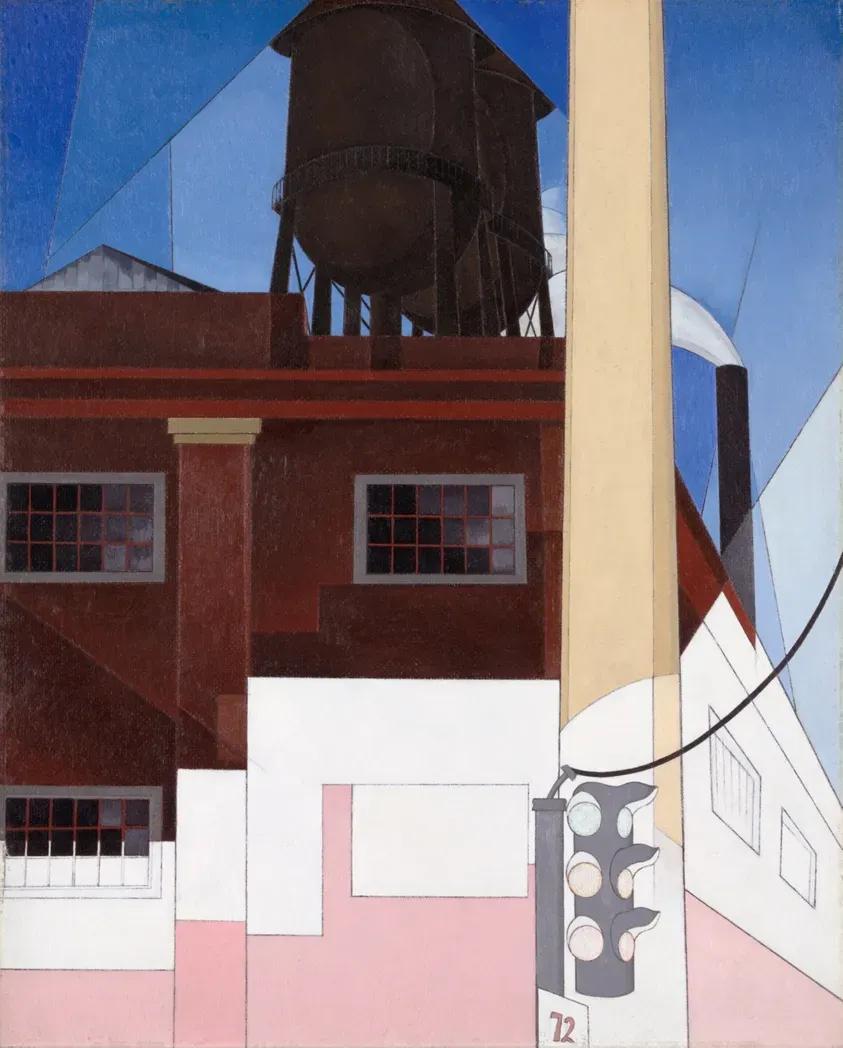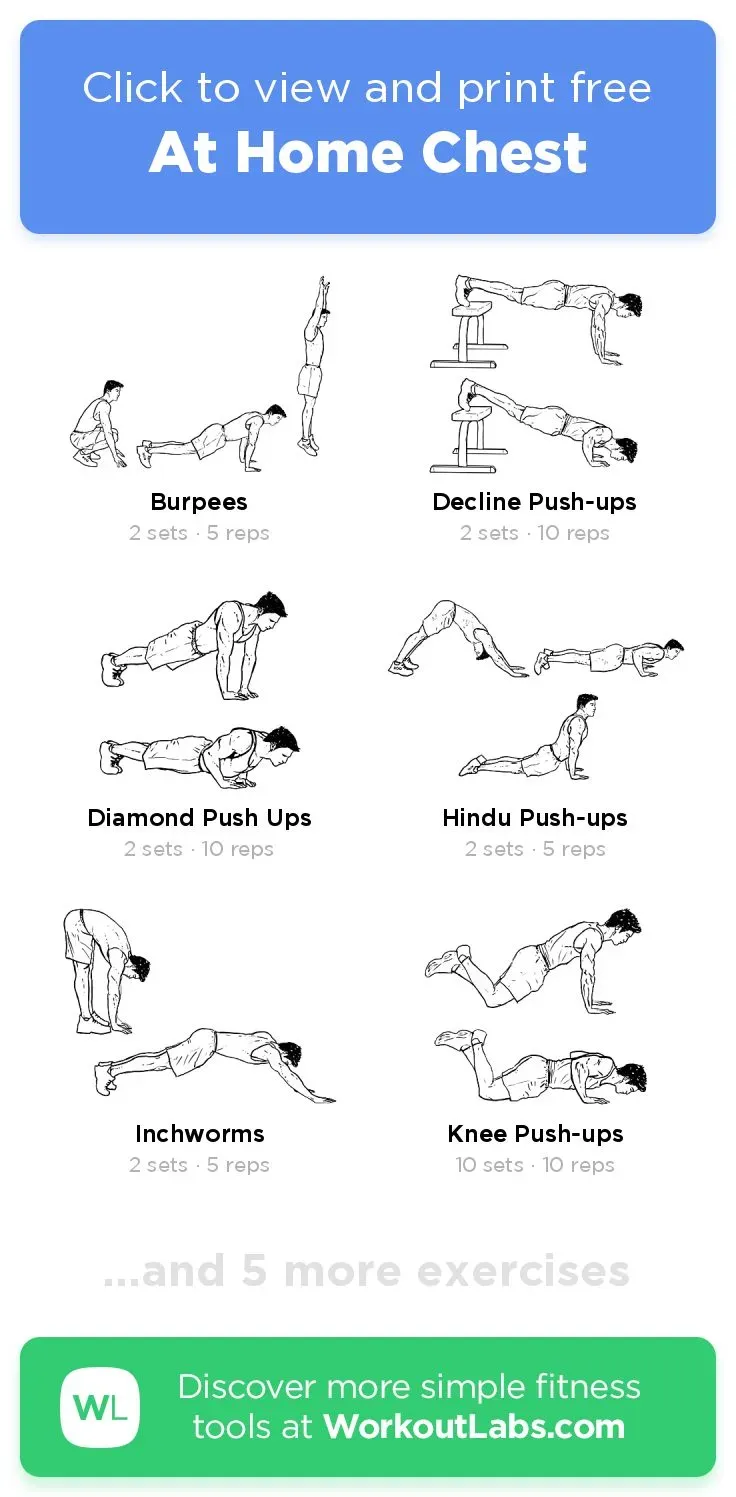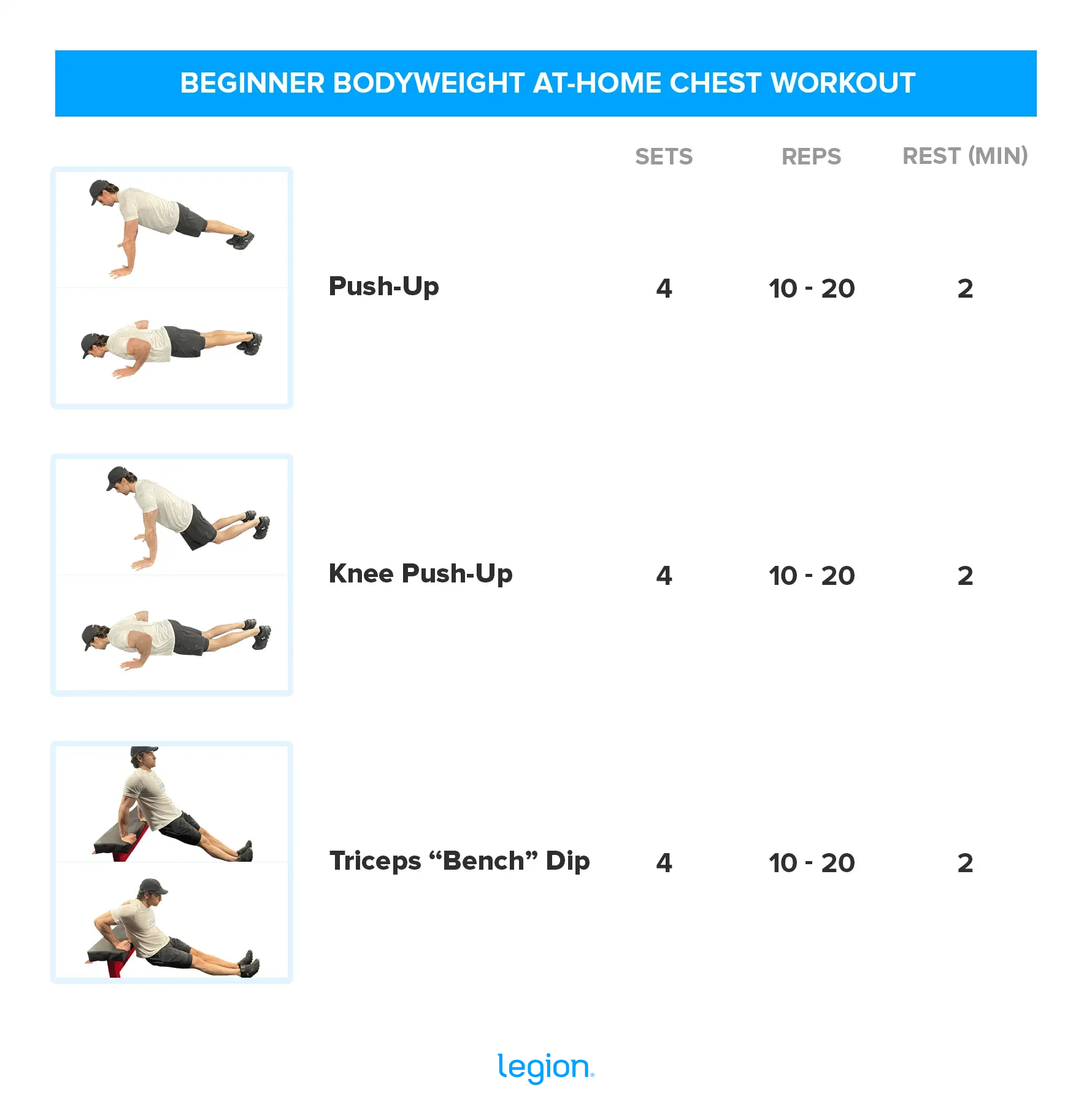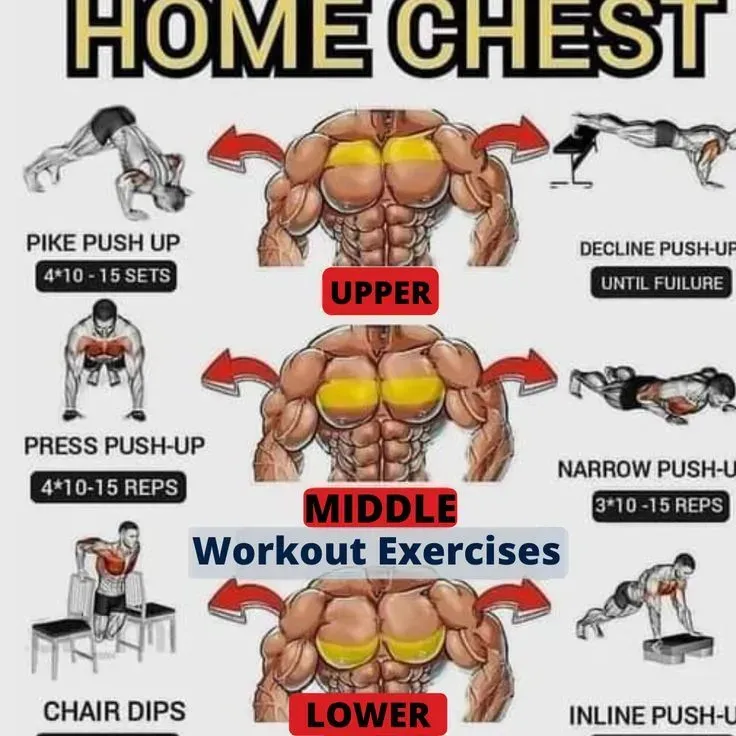Table of Contents
Thinking about building a stronger chest but the gym feels like a different planet? Maybe you just don't have the time or the inclination to trek to a fitness center. The good news is, you absolutely don't need a fancy gym membership or a garage full of expensive equipment to start sculpting your chest muscles. Forget the excuses about needing heavy benches or cable machines. A solid beginner at home chest workout is entirely within reach, using just your body weight or maybe a couple of basic dumbbells if you have them lying around.
Why Bother with Your Chest Anyway?

Why Bother with Your Chest Anyway?
Beyond the Beach Body: Real-World Chest Strength
Look, everyone likes the idea of a strong, well-defined chest. It’s a classic symbol of fitness, right? But honestly, the benefits go way deeper than just how you look in a shirt. Your chest muscles, primarily the big pectoralis major and the smaller pectoralis minor underneath, are workhorses for your upper body. They’re heavily involved in pushing things away from you – think opening a heavy door, pushing a lawnmower, or even just getting yourself up off the floor. Neglecting them means missing out on crucial functional strength.
The Foundation for Upper Body Power
A strong chest provides a stable base for many other movements. When you throw a ball, swing a racket, or even just reach for something on a high shelf, your chest muscles are engaged, supporting your shoulders and arms. Building strength here helps improve posture, counteracting that slumped-shoulder look many of us get from too much time at a desk. It’s about creating balanced strength across your whole upper body, which helps prevent injuries and makes daily life feel significantly easier. Think of it as building the engine for your pushing power.
- Improved posture
- Easier pushing and lifting tasks
- Enhanced shoulder stability
- Better performance in sports
- Reduced risk of upper body injuries
Beginner At Home Chest Workout: Bodyweight Essentials

Beginner At Home Chest Workout: Bodyweight Essentials
Push-Ups: The King of At-Home Chest Builders
Alright, let's get down to the real work for your beginner at home chest workout. When you think "at-home chest," the first thing that pops into most people's heads is the push-up. And for good reason! It's a fantastic compound movement that hits your chest, shoulders, and triceps all at once. You don't need a single piece of equipment, just a bit of floor space. Getting into the plank position, hands slightly wider than shoulder-width, then lowering your chest toward the ground and pushing back up – that's the basic idea. Sounds simple, right? It is, until you try to do a proper one.
Making Push-Ups Work for You (Even If You Can't Do One Yet)
Now, let's be honest. Not everyone can drop down and crank out ten perfect push-ups right away. And that's totally fine. That's what "beginner" means. The beauty of bodyweight exercises is that you can easily modify them to match your current strength level. Can't do a push-up on the floor? Start with wall push-ups, leaning against a wall. Too easy? Move to incline push-ups with your hands on a sturdy table or chair. The higher the surface, the easier it is. Gradually work your way down to doing them on your knees, and eventually, on your toes on the floor. Progression is key here, not perfection on day one. Don't try to be a hero and just flop to the ground; modify it so you can actually control the movement.
- Wall Push-Ups: Easiest starting point, lean against a wall.
- Incline Push-Ups: Hands on a stable elevated surface (table, chair).
- Knee Push-Ups: Hands on the floor, lower body supported on knees.
- Standard Push-Ups: Hands and feet on the floor.
Beyond the Basic Push-Up: Adding More Angles
Once you're comfortable with standard push-ups, you can start playing with variations to hit different parts of your chest. For example, decline push-ups, where your feet are elevated on a chair or bench, put more emphasis on the upper chest. Diamond push-ups (hands close together forming a diamond shape) work the inner chest and triceps hard. Remember to keep your core tight throughout any variation – no sagging hips! Just these few variations alone give you plenty of options for a challenging beginner at home chest workout without needing any weights. It's about getting creative with gravity.
Level Up Your Beginner At Home Chest Workout with Weights

Level Up Your Beginner At Home Chest Workout with Weights
Why Add Weights to Your At-Home Routine?
so you've gotten comfortable with bodyweight push-ups and maybe even tried a few variations. That's awesome progress for your beginner at home chest workout. But what happens when those push-ups start feeling a little too easy? This is where adding some external resistance comes in, and dumbbells are your best friend for an at-home setup. They don't take up much space, and a decent pair (or even adjustable ones) can last you a long time. Adding weight is the most direct way to increase the challenge and keep building strength and muscle size once bodyweight alone isn't enough.
Think of it like this: your muscles adapt to the stress you put on them. If the stress stays the same (doing the same number of push-ups every time), your progress will eventually stall. Dumbbells allow you to progressively overload your chest muscles – meaning you can keep making them work harder as you get stronger. It opens up a whole new range of exercises and angles you just can't hit with bodyweight alone. It's not about needing to lift a ton of weight right away; it's about adding a controlled challenge that you can increase over time.
Dumbbell Chest Press: Your New Go-To
The dumbbell chest press is the weighted equivalent of a push-up and a cornerstone of any good chest routine, including a weighted beginner at home chest workout. You can do this lying on the floor or on a sturdy bench if you have one. Lie on your back, holding a dumbbell in each hand at chest level, palms facing forward. Keep your feet flat on the floor (or knees bent if on the floor). Press the dumbbells straight up towards the ceiling, keeping control, then slowly lower them back down. Don't let your elbows flare out too wide; aim for about a 45-degree angle relative to your body. This exercise hits the bulk of your pec muscles effectively.
Start with a weight you can comfortably lift for 8-12 repetitions with good form. If you're struggling to control the weight or feeling it mostly in your shoulders, the weights are too heavy. There's no prize for lifting sloppy. Focus on feeling the squeeze in your chest at the top of the movement and controlling the descent. This controlled negative (lowering the weight) is just as important as the push up.
- Lie flat on your back (floor or bench).
- Hold a dumbbell in each hand at chest level.
- Palms face forward, elbows slightly tucked (about 45 degrees).
- Press dumbbells straight up, squeezing chest.
- Lower slowly and with control.
Dumbbell Flyes: Targeting That Inner Chest Squeeze
While the press is great for overall mass and strength, dumbbell flyes offer a different stimulus, focusing more on stretching the chest muscles and hitting the inner part of the pectorals. Lie on your back, holding a dumbbell in each hand with palms facing each other, arms extended straight up above your chest (slight bend in the elbows is fine). Keeping that slight bend, lower the dumbbells out to the sides in a controlled arc, like you're giving a big, wide hug. Stop when you feel a good stretch across your chest, then bring the dumbbells back up to the starting position, squeezing your chest muscles together.
Use lighter weights for flyes than you would for presses. This exercise is more about the stretch and the squeeze than moving heavy weight. Rushing through it or using weights that are too heavy can put strain on your shoulder joints. Focus on the mind-muscle connection – really concentrating on feeling your chest working throughout the movement. Adding flyes alongside presses provides a more complete stimulus for your chest when you're building your beginner at home chest workout with weights.
Crafting Your Complete At Home Chest Workout Routine

Crafting Your Complete At Home Chest Workout Routine
Putting It All Together: Your Weekly Plan
so you've got the bodyweight moves down, maybe you've even added some dumbbells. Now, how do you actually structure this into a consistent beginner at home chest workout routine? It's not rocket science, but it does require a little planning. The goal is consistency. Aim to hit your chest muscles 2-3 times per week, allowing at least a day of rest in between sessions. This gives your muscles time to recover and grow stronger. You could do a bodyweight-only day and a weighted day, or mix and match exercises in each session. What's crucial is picking a few exercises (say, 3-4), performing 2-3 sets of 8-15 repetitions for each, and focusing on controlled movement over speed. Listen to your body; if something feels sharp or wrong, stop.
- Workout 2-3 times per week.
- Allow rest days between sessions.
- Choose 3-4 exercises per workout.
- Perform 2-3 sets of 8-15 reps.
- Focus on controlled form.
Your At Home Chest Strength Starts Now
So, there you have it. Building a stronger, more functional chest doesn't require a gym membership or complex machinery. A consistent beginner at home chest workout, whether using just your body weight or adding some dumbbells, can deliver real results. Focus on proper form, listen to your body, and stay consistent. The path to a stronger upper body is accessible right where you are.
